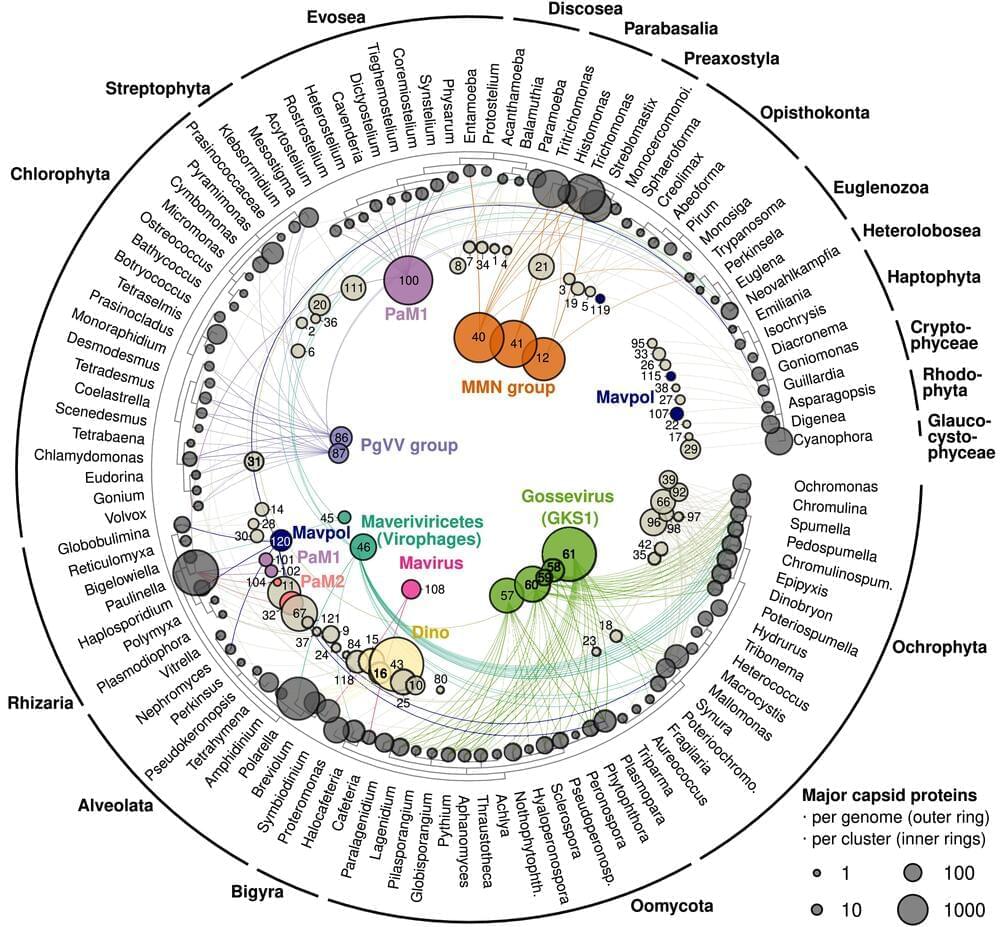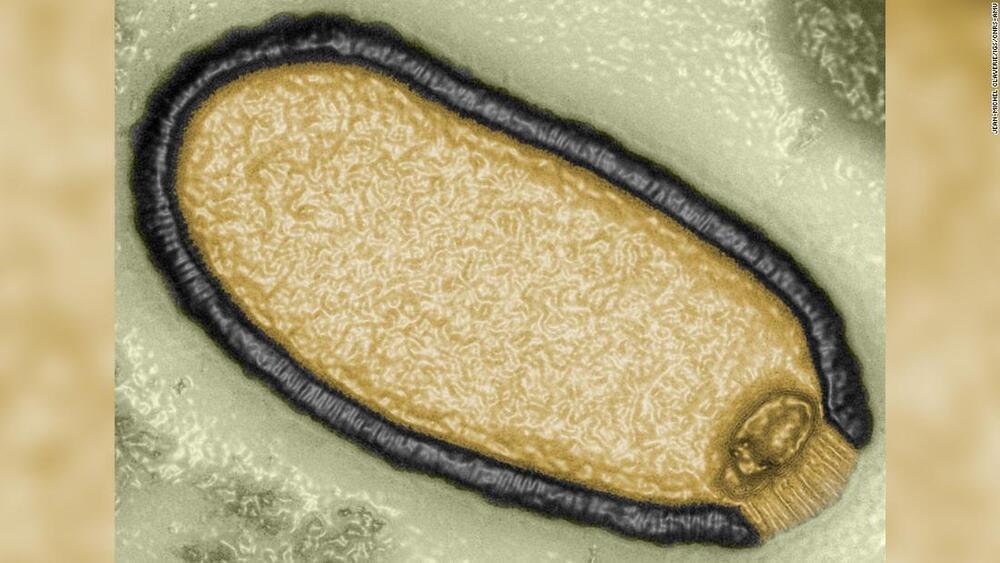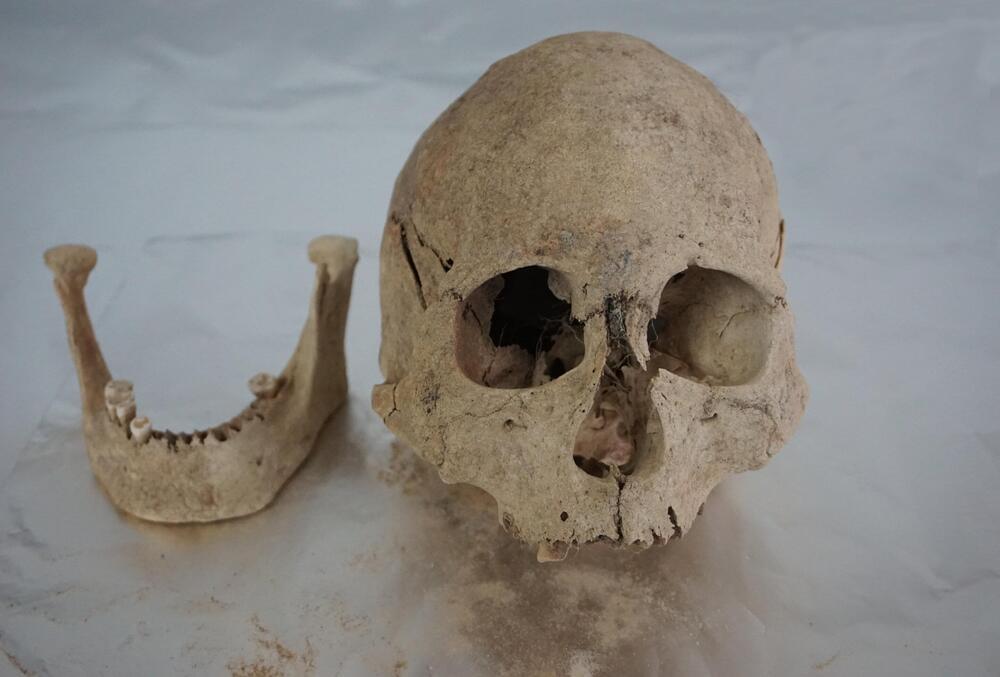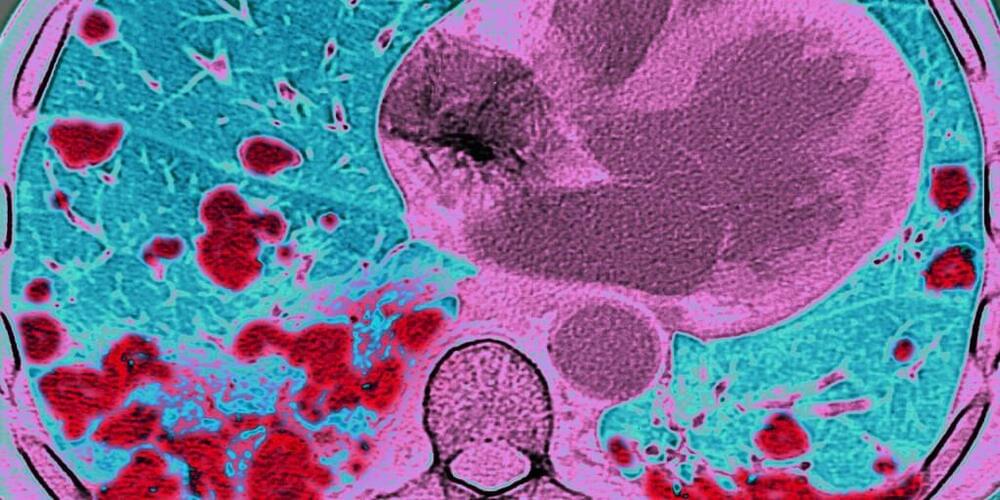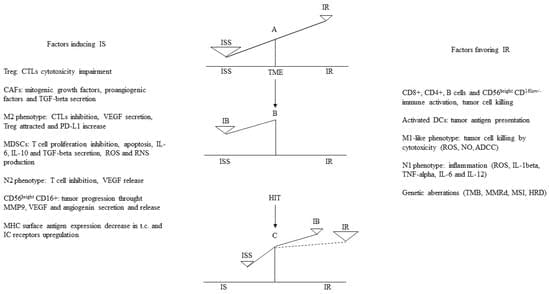Eukaryotic genomes contain a variety of endogenous viral elements (EVEs), which are mostly derived from RNA and ssDNA viruses that are no longer functional and are considered to be “genomic fossils.” Genomic surveys of EVEs, however, are strongly biased toward animals and plants, whereas protists, which represent the majority of eukaryotic diversity, remain poorly represented. Here, we show that protist genomes harbor tens to thousands of diverse, ~14 to 40 kbp long dsDNA viruses. These EVEs, composed of virophages, Polinton-like viruses, and related entities, have remained hitherto hidden owing to poor sequence conservation between virus groups and their repetitive nature that precluded accurate short-read assembly. We show that long-read sequencing technology is ideal for resolving virus insertions. Many protist EVEs appear intact, and most encode integrases, which suggests that they have actively colonized hosts across the tree of eukaryotes. We also found evidence for gene expression in host transcriptomes and that closely related virophage and Polinton-like virus genomes are abundant in viral metagenomes, indicating that many EVEs are probably functional viruses.
